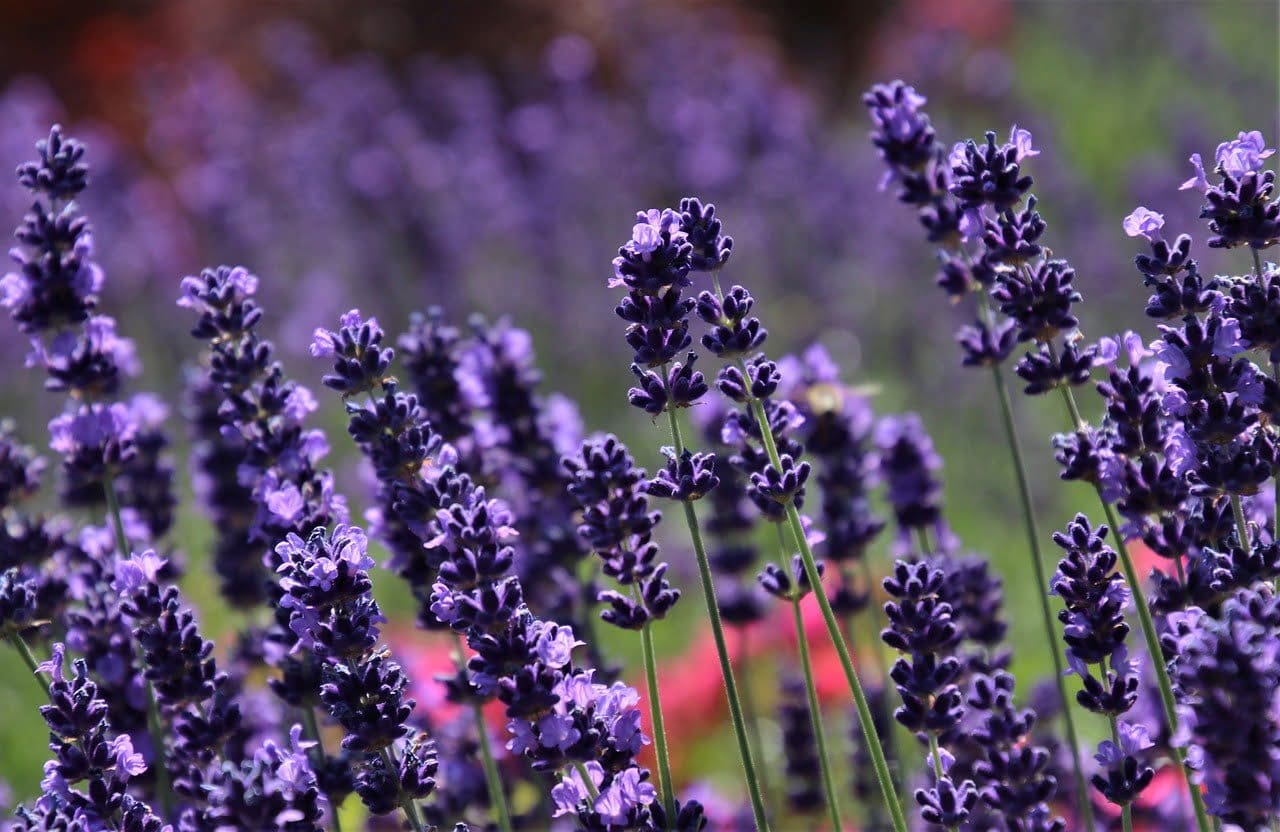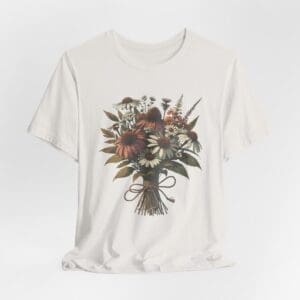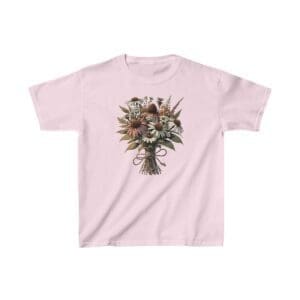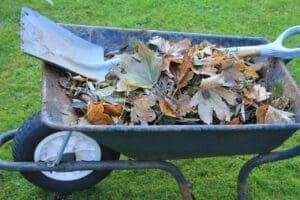The best time to prune lavender in the UK is in late summer or early autumn, usually August or September. This avoids winter damage and promotes good flowering next year.
Lavender is beloved in gardens across the United Kingdom for its iconic flowers and fragrance. With proper pruning, lavender plants can thrive for years, rewarding gardeners with endless blooms and foliage.
This guide will explore exactly when and how to prune lavender to encourage healthy growth and prolifically flowering plants.
Top Tip
Use clean, sharp gardening shears when cutting back lavender stems to avoid crushing or tearing the plants’ tissues.
This post contains affiliate links which means we may make commission from any qualifying sales with no extra cost to yourself.
Why Pruning is Important for Lavender

Lavender is a woody perennial that blooms on growth from the previous season. As the plants age, they tend to become woody and produce less flowers. Pruning lavender on a yearly basis rejuvenates the plants by removing old, unproductive wood, stimulating new growth from the base. This results in more abundant blooms year after year.
Pruning also shapes the plant, removing leggy stems and maintaining a more compact, rounded form. Well-pruned lavender looks attractive in the garden and smells wonderful when brushed against or when the breeze catches the fragrance.
When to Prune Lavender in the UK?
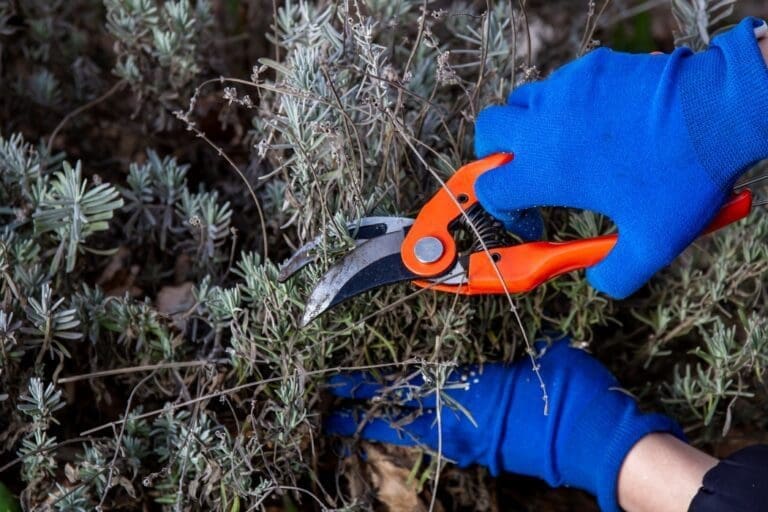

Timing is crucial when pruning lavender. In most regions of the UK, late summer to early autumn is the optimal time to prune. Pruning in late August or September allows time for some regrowth before winter, while avoiding the tender new growth that early spring pruning stimulates.
Pruning in summer heat stresses the plants unduly. Late summer pruning sets up the plant for lush growth and abundant blooms the following season. Deadheading spent blooms can be done anytime to encourage a second flush of flowers in summer. Avoid pruning lavender in the winter, as the frost-tender plants may suffer dieback.
Pruning Young Lavender Plants
The first year after planting lavender, pruning usually isn’t needed. Simply remove spent flower stalks to promote additional flowering. The second year, do a light shaping prune in spring to remove any dead or damaged branches. In the second summer, deadhead blooms to extend flowering. Begin full pruning in the third year after planting and continue annually.
How to Prune Established Lavender Plants


For established lavender plants, pruning in late summer involves cutting back flower stalks and shortening long, straggly stems. Prune just above the bottom whorl of leaves on each stem, leaving about 2-3 inches of greenery.
Take care not to cut into the woody base of the plant. Remove about a third of the plant’s height. Leaving some foliage over winter protects the plant from frost damage. Shape the plant with pruning shears for a rounded, full form.
Rejuvenating Old, Woody Lavender Plants
Older lavender plants that have become woody and flower poorly with many dead branches can be rejuvenated with hard pruning. In late summer, prune back stems close to the base, removing all old wood and stimulating fresh new growth from the roots up. This hard pruning should not be done more than about every 3 years, as it stresses the plant. But it is very effective at completely renewing overgrown lavender.
Deadheading for Repeat Blooms
Even lightly pruning off spent lavender blooms through the summer months will encourage a second, smaller flush of repeat flowering. Just pinch or snip off faded flowers before they form seeds. Deadheading directs the plant’s energy into new buds instead of seed production.
Providing Aftercare
After pruning lavender, be sure to remove all clippings from around the plant. Water occasionally if rainfall is lacking. Apply a balanced organic fertiliser or compost tea in spring to support the plant’s recovery from pruning. With proper yearly pruning and care, lavender will thrive for many years in UK gardens.
Key Takeaways


- Prune lavender every year in late summer for best results
- Avoid pruning in winter when frost damage can occur
- Remove about a third of the plants height, retaining some winter foliage
- Rejuvenate old, woody plants with hard pruning to the base
- Deadhead blooms though summer for repeat flowering
- Provide aftercare with water, fertilizer and debris clean-up
Final thoughts
Proper pruning is vital for healthy, thriving lavender plants. The ideal time to prune lavender in the UK is in late summer or early autumn, after the first flush of flowers. Avoid pruning in winter when frost damage is more likely. Tailor your pruning technique to the age and condition of the plants. Light shaping can be done anytime, while hard pruning should be reserved for overgrown plants in need of rejuvenation. Follow the tips covered in this article to encourage lush growth and maximize flowers from your lavender plants.
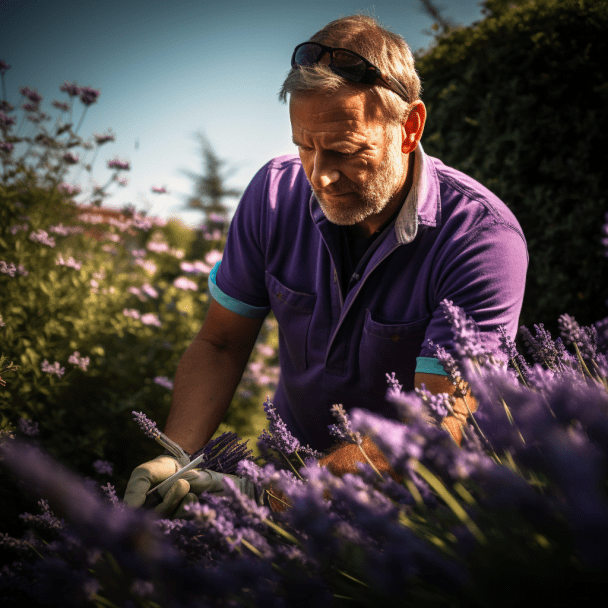

Frequently Asked Questions
Q: When can I cut back lavender in the UK?
The best time to prune lavender in the UK is in late summer or early autumn, usually August or September. This avoids winter damage and promotes good flowering next year.
Q: How far to cut back lavender in autumn?
Cut back lavender stems by around one-third to one-half of their height. Make cuts just above the woody growth, taking care not to cut into it.
Q: Can I prune lavender in October?
October pruning is still suitable provided the plant is healthy and has not been damaged by frost. Prune conservatively and leave more foliage to protect from winter weather.
Q: Can you cut lavender back too far?
It’s possible to over-prune lavender. Never cut into the woody base of the plant as this can kill it. For established plants, don’t remove more than one-third of the plant’s height when pruning.
Q: Should lavender be cut back every year?
Lavender should be pruned every year to maintain its shape, remove old woody growth, and encourage healthy new flowers. The size and type of pruning depends on the plant’s condition, from just removing spent blooms to cutting back one-third of the stems.

